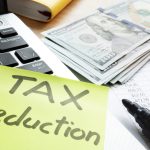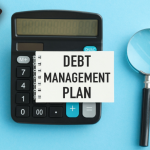If you’re self-employed or earn certain types of income, there’s a good chance you’ll need to pay estimated taxes — and your next payment is due soon.
There are four due dates for estimated tax payments: The first one is April 15, the next one one is June 16, followed by Sept. 15 and then Jan. 15 the following year. Usually the due date is the 15th of the month, but June 15 falls on a Sunday this year, so the due date is June 16.
For context, the U.S. tax system is a pay-as-you-go model: You’re meant to pay taxes as you receive income throughout the year. If you’re an employee, taxes are withheld from every paycheck and sent to the IRS by your employer. But self-employed people have to take care of their own tax payments. If you don’t make estimated payments and instead wait until the tax-filing deadline to pay your taxes, you may face late-payment penalties and interest.
What are estimated taxes?
Estimated taxes are owed four times a year on any taxable income you earned during that period that wasn’t subject to federal withholding. That is, you received income and no money was withheld to pay your tax bill.
If your sole income is a salary from an employer, you generally don’t need to worry about estimated taxes, because your employer withholds money from your paycheck to pay the IRS on your behalf (just make sure you have enough withheld from your paycheck).
But anyone who receives income from which taxes haven’t been withheld needs to understand how and when to pay estimated taxes.
Types of income usually not subject to tax withholding, and thus liable to require estimated tax payments throughout the year, include:
- Self-employment earnings
- Gig or side hustle earnings
- Interest
- Dividends
- Capital gains
- Prizes
- Rents
- Unemployment compensation
- Social Security benefits in some cases
Who has to pay estimated taxes?
You’ll need to make estimated tax payments if you expect to owe more than $1,000 in taxes for the year, after any withholding you paid or refundable credits you’re eligible for are subtracted out. (Note that special rules apply for farmers and fishermen.)
The IRS wants Americans to pay taxes as they earn money. Normally, penalties and interest apply for underpayments and late payments. However, the IRS offers safe harbor guidelines to help you avoid those penalties, even if you’re not sure exactly how much income you’ll have for the year.
For example, let’s say you earned self-employment income in 2025. As long as you make estimated payments (either in one lump sum by the first deadline below, or spread out over four or more payments by the deadlines below) that add up to 90 percent of your total 2025 tax bill, you won’t owe penalties or interest.
There’s another safe harbor, one that’s especially useful if you’re not sure how much you’re likely to owe in taxes for 2025: You can pay 100 percent of your 2024 tax bill (paid in a lump sum by the first deadline below, or spread out over four or more payments by the deadlines below) to protect yourself from owing penalties and interest.
That safe-harbor percentage rises to 110 percent if your 2024 income was $150,000 or more, whether single or married filing jointly (or $75,000 if married filing separately in 2025).
When are estimated taxes due?
The 2025 deadlines for paying estimated taxes are as follows:
| Estimated tax payment deadlines for 2025 | For income received in this time period |
|---|---|
| April 15, 2025 | Jan. 1 through March 31, 2025 |
| June 16, 2025 | April 1 through May 31, 2025 |
| Sept. 15, 2025 | June 1 through Aug. 31, 2025 |
| Jan. 15, 2026 | Sept. 1 through Dec. 31, 2025 |
The fourth deadline is always in January of the following year.
Normally, the estimated tax deadlines fall on the 15th of the month, but when this date falls on a weekend or federal holiday, the filing deadline is pushed to the following business day.
Need an advisor?
Need expert guidance when it comes to managing your money?
Bankrate’s AdvisorMatch can connect you to a CFP® professional to help you achieve your financial goals.
How to figure out how much to pay
Form 1040-ES offers instructions for figuring out your estimated taxes and provides vouchers to send along with your estimated tax amounts if you pay by check or money order.
Choosing the “100 percent of the previous year’s tax bill” safe harbor option is simple. Simply look at your tax return for the previous year, and then make estimated payments that add up to the total tax owed for that year.
There is a different safe harbor for high earners, defined by the IRS as those making $150,000 or more if single or married filing jointly (or $75,000 if married filing separately in 2025): They must pay 110 percent of the previous year’s tax liability to meet the safe harbor. For example, if your tax bill last year was $30,000, this year you would pay $33,000 (10 percent more) in estimated and/or withholding taxes to avoid underpayment penalties.
If you choose the “90 percent of this year’s tax bill” safe harbor, then, depending on your situation, you might use your previous year’s tax return as a source for calculating how much you owe. Check the income claimed and deductions taken on the previous year’s federal tax return and assess whether they will be comparable in the current year.
The IRS promotes the idea of paying estimated taxes in four equal payments over the year, but some businesses are seasonal. For example, a landscaping business makes most of its money during the warmer months of the year. It’s wise to pay the tax as you get income. In this situation, you’d follow the annualized income installment method that enables you to pay when you’re flush with cash. Instructions are in IRS Publication 505.
How to pay estimated taxes
Once you determine the amount to pay, the IRS will accept your money in several ways, including:
- Direct payment from your checking or savings account.
- The IRS2Go mobile app (IRS2Go is available in the App Store or on Google Play.)
- Payment with debit or credit card.
- Use of the Electronic Federal Tax Payment System.
- Same-day wire through your bank.
- Cash at a participating retail establishment.
Instructions for making payments can be found at IRS.gov/payments.
If you pay online, which you can do any time of the year, be sure to select the tax year and tax type or form associated with your payment. If you pay by check or money order, send the payment along with a Form 1040-ES voucher to the address specified for your state or territory on that form. Make the check out to the United States Treasury, and in the notes section in the lower left corner, specify the tax year and “estimated taxes.”
If you live in an area that has experienced a natural disaster, keep in mind that the IRS may have postponed the due dates for estimated tax payments. A list of such situations can be found on the IRS website.
Read the full article here
















